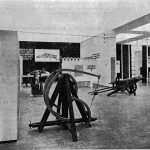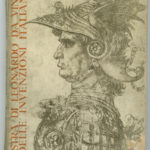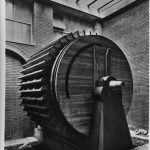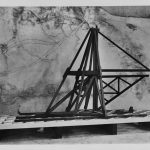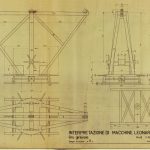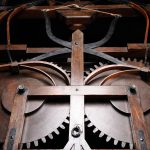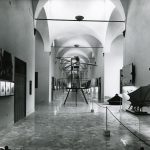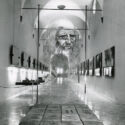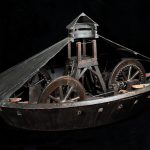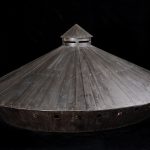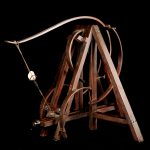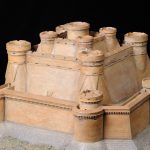The birth of a collection in Milan: from the Leonardo Exhibition of 1939 to the opening of the National Museum of Science and Technology in 1953
Abstract
https://dx.doi.org/10.15180/150404/001The collection of Leonardo da Vinci historical models at the National Museum of Science and Technology in Milan is one of the largest and most important in the world. Created in 1952–53 to celebrate the fifth centenary of the birth of Leonardo and the opening of the Museum, the collection is made up of more than 140 models, interpreting the studies of Leonardo da Vinci and helping Museum visitors to understand and visualise his ideas. Before 1952, Leonardo models were already created and displayed in Florence (1929), Chicago (1933) and above all in the great Leonardo Exhibition held in Milan in 1939, which made a very important contribution to the knowledge of Leonardo as engineer to the public.
It’s very important to clarify the role of these models, which are not original artefacts made by Leonardo himself nor replicas of no longer existing machines. They are really a very important interpretation device created by scientific museology between late 1920s and 1950s.
Keywords
Chicago World's Fair, Leonardesca Exhibition, Leonardo models, National Museum of Science and Technology
Introduction
https://dx.doi.org/10.15180/The collection of Leonardo models at the National Museum of Science and Technology originated in 1952 to celebrate the fifth centenary of the birth of Leonardo da Vinci (1452–1519). Toward this purpose, a National Committee was instituted to organise the celebrations, which took place in those cities in Italy connected with Leonardo’s life: Vinci, Florence, Venice, Rome, and Milan, the latter of which hosted the exhibition dedicated to The Science and Technology of Leonardo. The first exhibition of the models thus coincided with the inauguration of the Museum on 15 February 1953 in the cloisters of the restored Olivetan monastery of San Vittore, which suffered heavy bombardment in 1943 during the Second World War.[1]
The first models of machines, Chicago World’s Fair and the 1939 exhibition in Milan
https://dx.doi.org/10.15180/150404/002The history of the study of Leonardo’s technological drawings and of their interpretation by means of models had its beginnings in the preceding decades, owing in particular to the progressive reproduction of facsimiles and complete critical transcriptions of Leonardo’s manuscripts, which made them more easily accessible. Among these editions, very important work was done by Giovanni Piumati, curating the transcription and critical edition of the Codex Atlanticus in the Biblioteca Ambrosiana between 1894 and 1904 in a sumptuous version from the presses of Ulrico Hoepli.
During those same years, studies of Leonardo’s scientific works proliferated: fundamental was the work of Theodor Beck, who was one of the first engineers to attempt a philological reading of the drawings and provide an interpretation of them using modern diagrams. In 1906, on the occasion of the international exhibition for the opening of the Simplon Tunnel, Luca Beltrami hypothesised constructing a model of a flying machine based on Leonardo’s manuscripts, but the idea remained on paper.
It was only in 1929, for the First National Exhibition of the History of Science in Florence, that scholars Raffaele Giacomelli and Giuseppe Schneider produced the first eight models, all in the field of aeronautics: already from these precocious examples questions began arising on problems of interpreting Leonardo’s drawings and about how to counterbalance the scruples dictated by philology against the obvious need to make integrations to the drawings that, not being actual plans or projects, were often incomplete or lacking in details relating to mechanical or structural parts.
In 1933 the Italian Government decided to participate in the Century of Progress World’s Fair in Chicago with an exhibition displaying the supremacy of Italy in Science and Technics, from the Ancient Civilisation to the present time. The exhibition was organised by the CNR (National Council of Research), which had been founded ten years earlier and was directed by Guglielmo Marconi. More than three hundred objects were displayed in the Hall of Science: among them we can find one of the earliest models designed thanks to the interpretation of a Leonardo da Vinci drawing: a spinning wheel with mobile wings by Giovanni Strobino, a scholar who was expert in the history of weaving. (Strobino is one of the few scholars who also contributed to the two following exhibitions, in 1939 and 1952.)
The success of the Leonardo models was consecrated ten years later, however, in 1939, by the Mostra di Leonardo e delle invenzioni italiane (Exhibition on Leonardo and Italian Inventions), which the press later rechristened La Leonardesca, organised in Milan at the Palazzo dell’Arte (today the Triennale).

The nationalistic key and the political encouragement with which the event was organised were decisive: with the Fascist era in full swing and just before the war, Leonardo became the symbol for celebrating autarchy and the supremacy of Italian genius, to exhibit with pride the successes of an Italy that had no need of technological contributions from foreign powers. This was the reason for displaying alongside the chief exhibition of Leonardo the principal novelties of Italian technology, among which were the first experimental television programmes in Italy, again in 1939, by the Italian public broadcasting monopoly EIAR (Ente Italiano per la Audizioni Radifoniche)[2].
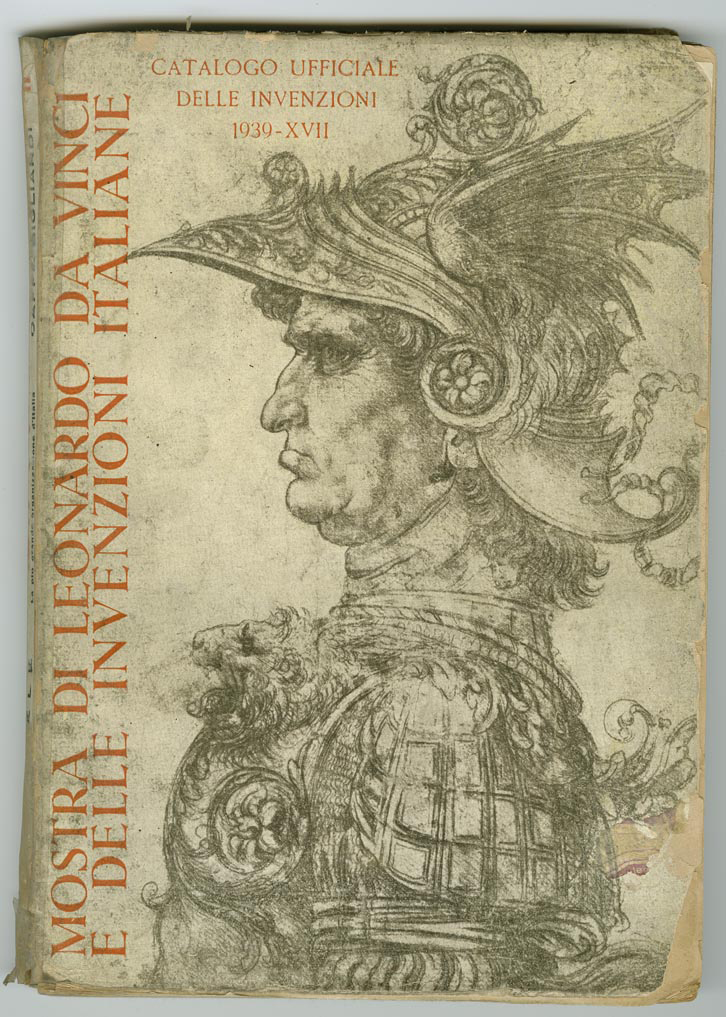
The purpose of the exhibition is to celebrate the universal and unequalled genius of Leonardo da Vinci, assumed as practically the symbol of all Latin and Christian, and therefore Roman, civilization, and to highlight the spiritual connections uniting this great man of accomplishments and creator with the realizations of Mussolinian and Imperial Italy. The combining of the Vincian celebrations with the exhibition of Italian inventions tends to demonstrate the continuity of the creative genius of the race and the great possibilities opening up to those within the climate of Fascist will.
(from the Exhibition programme, Mostra di Leonardo da Vinci e delle Invenzioni italiane, Milan, 1939[3])
The art section of the exhibition presented many masterworks by Leonardo and his school from all over the world. (Just a few months before the beginning of the Second World War, a very clever piece of diplomatic work succeeded in bringing paintings and drawings from both Germany and Great Britain to Milan.) Among the Leonardo drawings, a large selection of Windsor folios were present, together with drawings from the Duke of Devonshire Collection and the manuscripts preserved by the Institut de France in Paris[4]. Additionally, the originals of a large part of the archival documents collected to date relating to Leonardo’s life were exhibited.
This section was largely criticised by a part of the academic world, which considered the selection of artworks superficial and the supervision of Giorgio Nicodemi, Director of the Museums of the Castello Sforzesco, too compromised with the Fascist government; a fake painting by a private collector, called Madonna Noya, was also displayed. A very smart review of the exhibition, which was largely documented in the Italian and foreign press, was written and published by the novelist Carlo Emilio Gadda[5].
In spite of this climate, the exhibition marked a decisive phase in the study and, above all, the divulgation of Leonardo’s thoughts and works. The staging and setup of the exhibition was curated by architect Giuseppe Pagano, who was involved in the final months to coordinate a chaotic organization[6]. The exhibition was conceived with significant rhetorical excesses and emphatic tones characteristic of other exhibitions from the Fascist period. Great attention, however, was given to the reconstruction of historical context, along with an expert, scenographic use of photography.
The Executive Committee, coordinated by Giorgio Nicodemi for the scientific content and by Giuseppe Pagano for the scenography, was drawn from a rich constellation of scholars and architects, each of whom was entrusted with the organisation of one or more exhibition rooms.
By way of example, the monumental Atrium, with its highly evocative character and where the ‘column-raising’ machine which had been reconstructed on a colossal scale was exhibited, was curated by Giovanni Muzio; the Verrocchio Room, by Pietro Toesca; and the Leonardeschi Room, by Studio BBPR[7]. The scenography was largely influenced by the new rationalistic style, even if many period reconstructions were added, sometimes in a confused way.
Among the different sections of the exhibition, a prominent part was given to the display of the works of Leonardo as engineer. Around two hundred models were designed and built starting from the interpretation of Leonardo’s drawings. Engineer Arturo Uccelli was entrusted as head of the Models Office, where scholars including Giorgio Canestrini, Carlo Zammattio, Giovanni Strobino, Domenico Argentieri, and Luigi Tursini dedicated themselves to the study and interpretation of Leonardo’s manuscripts, to the execution of technical drawings for the cited inventions, and to the construction of related models[8].
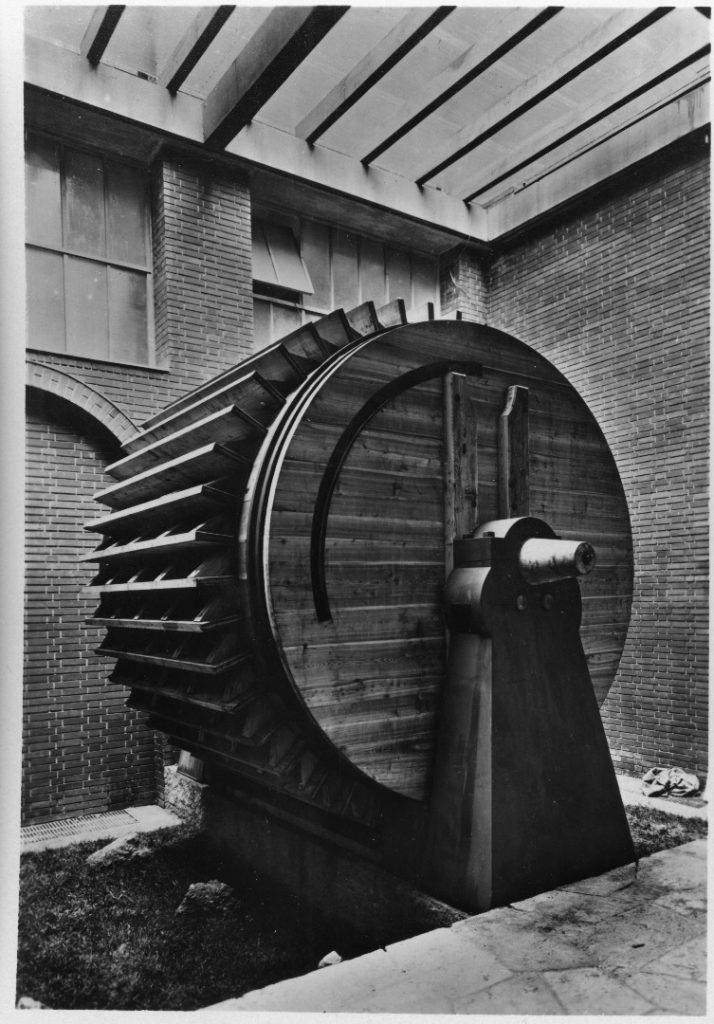

Between 1938 and 1939, these experts also published many works dedicated to various aspects of Leonardo’s scientific activity, from Canestrini’s studies on motion to Strobino’s on textiles, from Argentieri’s researches on optics to Tursini’s naval weapons. The exhibition thus presented the results of these researches that even today, in spite of their being surpassed by newer, more up-to-date approaches, constitute important episodes in the divulgation of Leonardo’s technical thought. In this perspective, special rooms were prepared dedicated to Astronomy, Mathematics, Cartography, Hydraulics, Shipbuilding, Anatomy, Botany, Optics, Mechanics, and Flight. The latter room was curated by Raffaele Giacomelli himself, who ten years earlier had presented his first interpretations at Florence and London[9]. Even though attention was given most particularly to those machines that were considered ‘anticipatory’ of modern inventions, the process of the study and interpretation overall was serious and rigorous, and constituted a fundamental step for the history of Leonardo modelling. Many of the models were realised on a large scale, often finished with brilliant colours and many of them could be put in motion manually or by means of electric motors. Of course, there was some forcing on the interpretative level to allow for the contexts of theatrical staging, visitor involvement, and interactivity, heralding the times. Associated with the models were photographic enlargements from the Leonardo manuscripts to show the original drawings, and this pairing of drawing and model was to be maintained in the future museum gallery.
In an article published that same year in Casabella, Giuseppe Pagano described his interpretation of the exhibition and the reconstruction of Leonardo’s machines:
Remote from any idea of immediate utilization, from any background of false construction site, or false weaving mill, or false typography, the looms, the presses, the drainage machines, each exceptional or beyond-normal construction followed the same reasoning that first awakened Leonardo’s interest: the same disinterested reasoning. Rather than machines to be patented, these became rational devices, mechanical experiments of sublime value. It pleased us, then, to give to more than one of these machines an unexpected color, blood red, pastel pink, deep black, so as to animate also their merit in terms of line and mass, against the white walls. To some this seemed to be a sacrilege against science, but many understood that the colorings gave an illuminating accent to the mechanical groups, by subdividing them into logical groupings suggested by color alone and leading them to live a bit beyond their already deluded high-handedness.
And then he continued:
Nor, conversely, even if one had wanted simply to pursue further elaboration of these particular researches, in the most abstract scientific sense, would it have been possible here. Too many of the machines Leonardo designed had to be realized smaller than life-size, more as explicatory models or personal interpretations than as machines effectively conceived by Leonardo; too many others had to be presented more as expository objects than as functional machines. On the other hand, this could not be an industrial laboratory, but only an exhibition, and as such it had to submit to the same ordering criteria, and live in the same art atmosphere as all the rest of the Leonardesca exhibition.
The exhibition of the machine models was so successful that it was repeated in New York during the 1940 Universal Exposition[10], at the New York Museum of Science and Industry in the Rockefeller Center, which today no longer exists. This event, supported by the Italian Ministry of Popular Culture (Ministero della Cultura Popolare), was also a sign of gratitude to the United States for the generous loans of works of art to the 1939 Milan exhibition. In 1942 the models were once again displayed in Tokyo, but during their journey back to Italy they were destroyed when the ship transporting them was bombed[11].
Fortunately, a large number of the technical drawings realised for construction of the models based on interpretation of Leonardo’s studies survived destruction or dispersion. In the following years these would constitute precious documents toward being able to materialise the dream, merely outlined in 1939, of developing a permanent museum dedicated to Leonardo da Vinci and his technical works. A portion of the drawings are currently preserved in the Museum’s historical archives while the rest are preserved in the Ente Raccolta Vinciana in the Castello Sforzesco, Milan.
The 1953 Leonardo da Vinci exhibition for the fifth centenary of his birth
https://dx.doi.org/10.15180/150404/003The idea of replicating the success of the 1939 Leonardesca exhibition by means of a permanent exhibition in Milan took form ten years later. A key role in this project was played by engineer Guido Ucelli, who was president of the Riva-Calzoni Company[12] and had been working since the 1930s for the establishment of a National Science Museum in Milan. Surprisingly, Ucelli was present and gave an effective contribution as president of the Riva Company both to the Chicago 1933 and Milano 1939 exhibitions. His influence and reputation grew at the end of the 1920s when, following the order of Benito Mussolini, he succeeded in recovering two Roman ships from Lake Nemi near Rome, draining the lake itself. After the Second World War Ucelli didn’t lose his reputation and could finally realise his project for the birth of a Science Museum, joining his efforts together with the works of the National Committee for the fifth centenary celebrations of Leonardo’s birth.
In 1949, the honourable Achille Marazza, president of the committee, presented to the mayor of Milan the project for an exhibition on Leonardo with which to inaugurate the Museum of Technology, then under construction. On 15 April 1950, Mayor Antonio Greppi approved the programme, and the exhibition was laid out during the next three years, with an immense project of study and interpretation of Leonardo’s drawings. As Marazza highlighted in the lines of the official program, the purpose of the celebrations was:
…to reconstruct, through a series of exhibitions, that aspect of universality which the prodigy of that spiritual unity had in the Great Tuscan, which today, more than ever, is in our aspirations.
The Milan exhibition, coordinated by engineer Carlo Rossi, tended toward an essentially technical-scientific reading, with highly didactic overtones, in a perspective of distinct separation between Leonardo’s different activities, thus leaving at Vinci the events around the birth, at Florence the artistic works, and, in Venice, the Renaissance context. The purpose of the Milan exhibition, according to the preliminary program, was:
…to show progressively to what extent historical science and technology had survived during the Middle Ages, and how much had been acquired at the time Leonardo lived; and toward this aim, to realize in the most complete expository form the fruits of his speculations in all fields, continuing the exhibit with what had been accomplished after him, and proceeding gradually in time to reach the most recent and significant realizations of our own days.
The exhibition was in fact situated at the beginning of a developmental programme for the Museum, which was just opening to the public, but which would inaugurate its sections only progressively through the next fifteen years. Leonardo thus became the paradigm of excellence and Italian creativity, of the capacity to resolve problems in an ingenious manner, of the independence of Italian industry.
Within the scientific committee there was a massive presence of members of the armed forces, who took care of a large number of the models thanks to the skills of technicians who worked in several model workshops. After losing the Second World War, the activity of the Italian Army in terms of the research and design of new military technologies was largely restricted[13], and this gave the possibility in terms of availability of time and people for contributing to the creation of the models. Standing out among the authors were Alberto Mario Soldatini and Vittorio Somenzi from Military Aeronautics, who designed all the models relating to Flight, and successively many utensil machines and the large plastic model for the Ideal City. Army general Giovenale Argan coordinated the study group for the realisation of war machines, while Luigi Tursini of the Navy presided over the group working on ship models. Very interesting, furthermore, was the contribution from the Historical Institute of the Engineer Corps, which realised some plaster models of fortifications and military architecture with great precision and mastery. The projects by these scholars were subsequently realised in Army model workshops and arsenals, from Rome to La Spezia, from Turin to Castellammare di Stabia.
The technical drawings and plans for the 1939 models constituted an important source for the reconstructions, often small-scale, effected in those years. Some scholars who were not part of the Army, such as Giorgio Canestrini, Giovanni Strobino, and Ladislao Reti, participated in the realisations for both exhibitions, at fourteen years’ distance from one another.
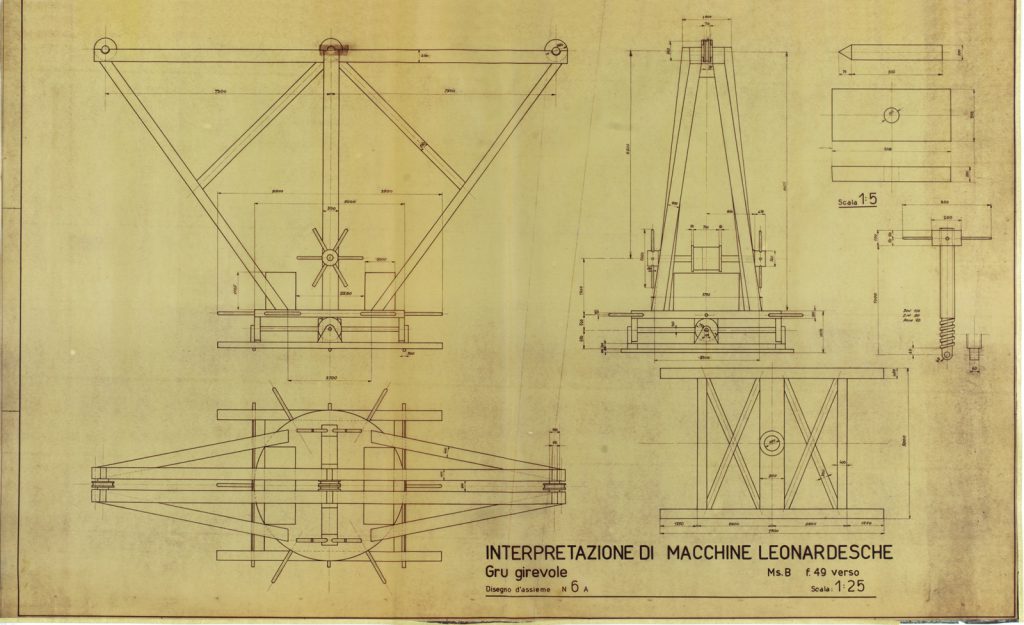
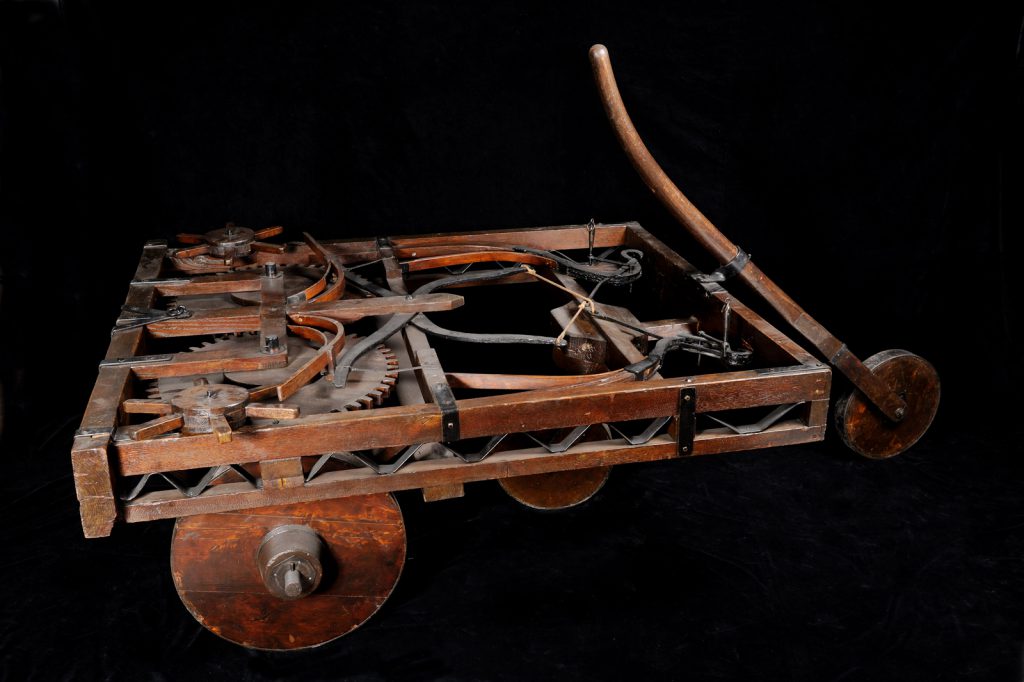
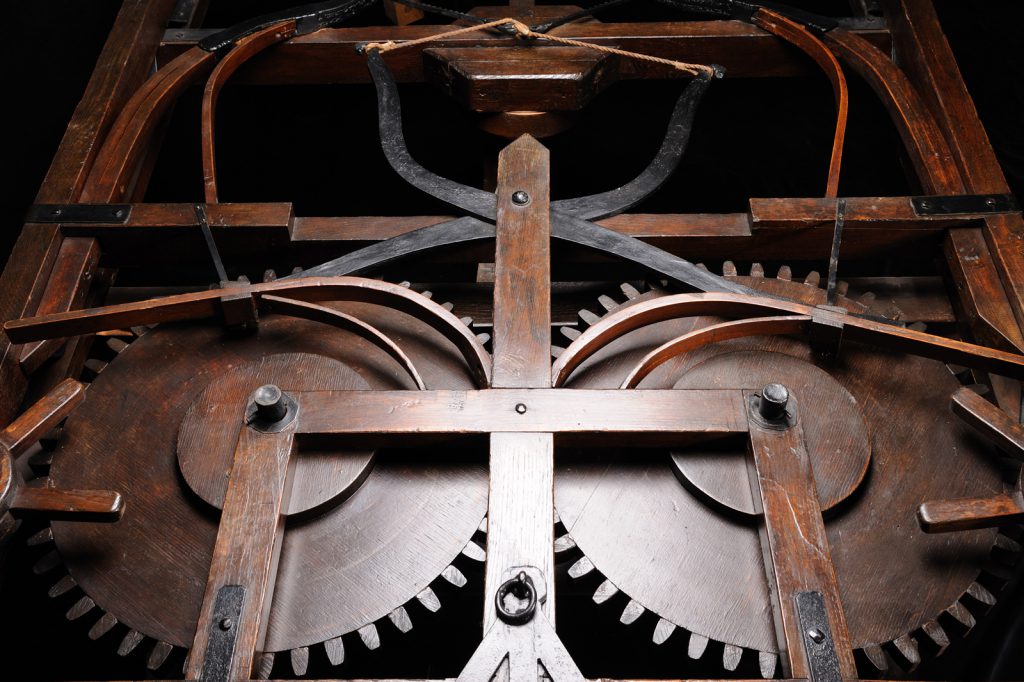
On 15 February 1953, on the occasion of the inauguration of the National Museum of Science and Technology, the models were displayed for the first time in the exhibition Scienza e Tecnica di Leonardo (Science and Technology of Leonardo). Subsequently the models were donated officially to the Museum by the National Committee, thence becoming part of the permanent collection. Alberto Mario Soldatini thus projected an exhibition setup for the gallery, which was inaugurated in 1956 with the integration of a new series of models that aimed at correcting the imbalance in the military direction that had been manifested in the 1953 exhibition. For this, many models were constructed of work machines, in addition to the large urban plastic model for the Ideal City.
The models were presented on crystal tables, in a suggestive thread that matched well with the monumental volumes of the monastic gallery. They were accompanied by crystal panels bearing didactic inscriptions in relief, cursive characters, and beside these were copies of the manuscripts of Leonardo that were referenced and an interpretative technical drawing. The exhibition setup was completed with wooden panels with large black-and-white reproductions of details of paintings and drawings by Leonardo, with obvious reference to the evocative and scenographic use of photography from the 1939 exhibition, here used however in a more orderly, less creative manner.
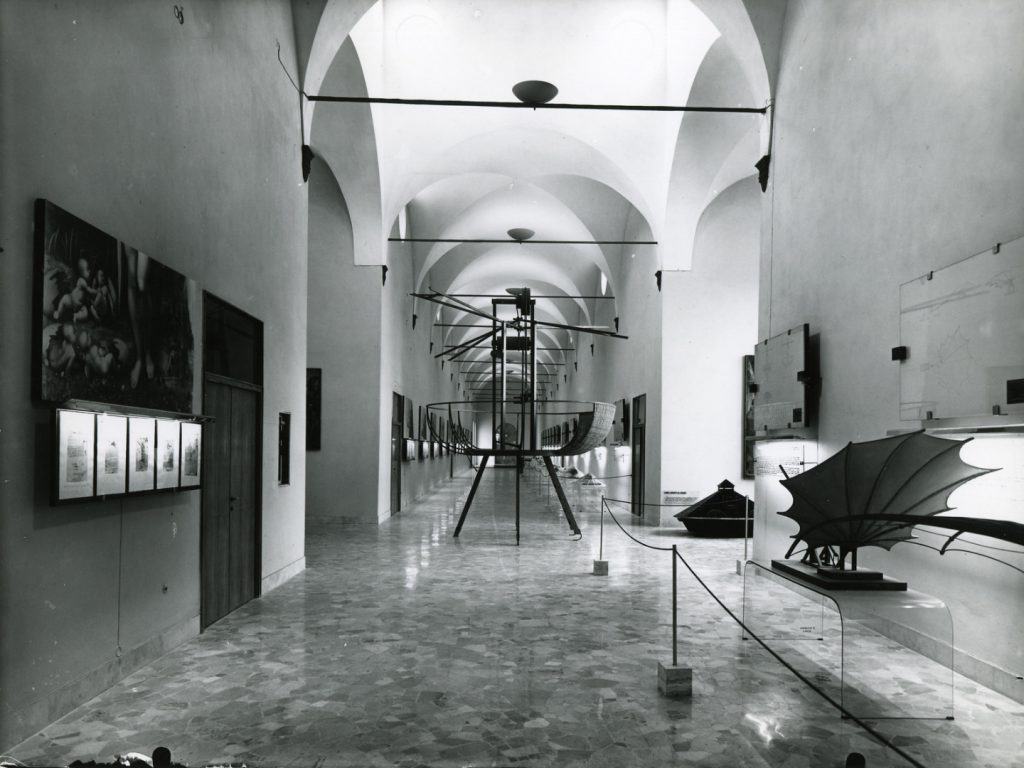
The approach selected was extremely innovative considering the times, because the models served as instruments of mediation for the greater public, capable of rendering Leonardo’s thoughts by interpreting the drawings, using a language that all could understand. In fact, the models, both in the 1939 and 1953 exhibitions, were always presented to the public without explaining this museological issue and for this reason the misconception that they were intended to be ‘reconstructions’ of Leonardo da Vinci inventions consolidated throughout the years and is still commonly present today.
With its encyclopedic flavour in presenting its admirable series of inventions, this gallery demonstrated that in 1953 – in a political climate completely different from that of 1939 – the idea of presenting Leonardo as anticipatory genius and paradigm of the Italian culture undeniably remained very powerful. Furthermore, the museological project focused only in the presentation of Leonardo’s studies as engineer with a display of the models, isolating him from the historical and geographical context of his time.
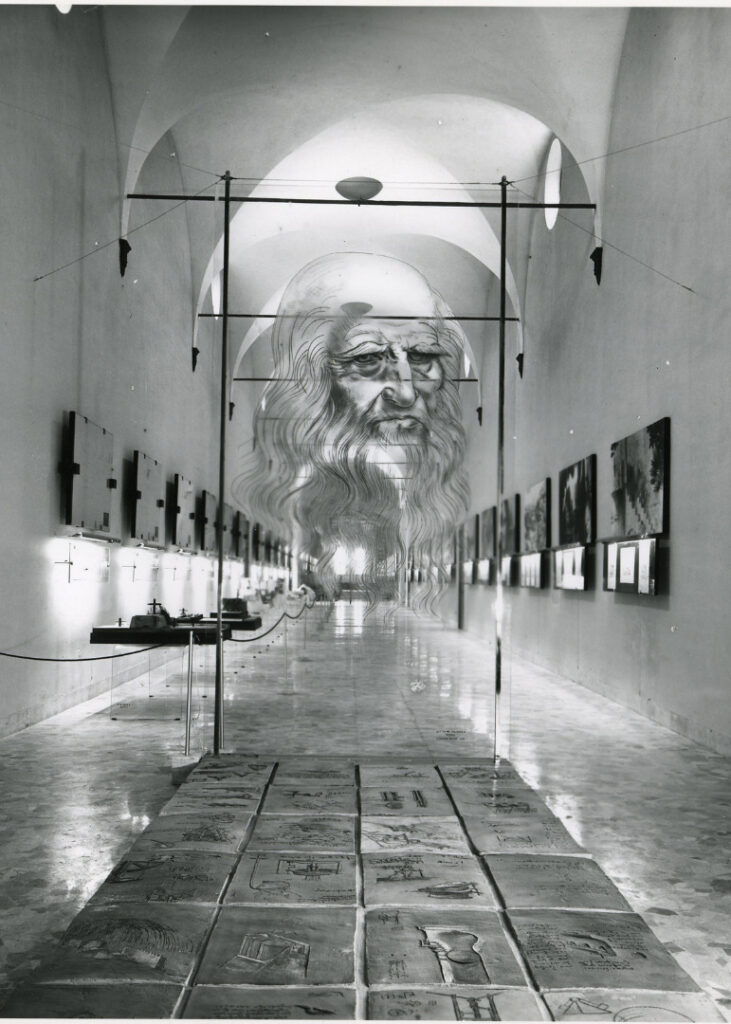
From drawing to model: interpreting Leonardo
https://dx.doi.org/10.15180/150404/004One of the most interesting reflections on the meaning of and modalities with which to study constructions of models from Leonardo’s drawings was left to us by Vittorio Somenzi, science historian and one of the principal authors of the Museum’s models. In 1955, two years after the Leonardo exhibition and with the intention of planning a new series of machine models under commission from the Museum, he wrote an article on the reconstruction of Leonardo models:
The error that threatens any historical reconstruction – whether of events or ideas or machines – comes from the tendency to project the knowledge we have today into the past, and to attribute to the protagonists of those events, to those who sustained those ideas, to the designers of those machines, the intentions that would have animated us if we could have put ourselves in their places. In order to avoid this danger, someone embarking upon the reconstruction or interpretation of any among the various projects buried among those seven thousand folios filled by Leonardo with drawings and notes, must first of all leave aside any analogy between these projects and the successive realizations owing to the gradual dissemination of that very method of research applied first by him in a systematic manner to all, or nearly all, branches of science and technology.
The need to be objective, to stick to the information left by Leonardo, is expressed clearly by Somenzi, even if the attitude with which the drawings were interpreted was not always so detached, and often the enthusiasm of seeing among Leonardo’s drawings precursory ideas or project realisations and mechanical practices resulted in taking the upper hand. And a year later it was again Somenzi who admitted that:
…it did sometimes occur that the models executed, even under the direction of specialists, showed the error of excessive optimism, from the historical point of view, regarding Leonardo’s prophetic capacities.
Leonardo’s drawings were often a response to his need to fix on paper the results of his studies and observations, without necessarily having implications in terms of practicality or project design. Aside from few exceptions it is very difficult to recognise, among the thousands of pages written by him, what he actually ended up constructing, by contrast with what remained at the stage of an idea, or even counted among the numerous machines that he had observed and documented.
Many of the drawings, even while fascinating, sophisticated, or precursory of modern ideas, were executed rapidly and lack in many mechanical or structural details, some of which would even be indispensable for any sort of practical realisation. This is normal, because drawings arrive at the level of constructional details only at the point of execution. The machines Leonardo designed rarely had practical or project-related implications, and they were often observations of existing technologies also documented by other fifteenth-century engineers: in some cases, they are quite detailed, but in others they are quick sketches, or focus only on individual mechanisms, showing no mechanical and structural parts. The lack of structural parts, of ‘castles’, in the machinery drawings by Leonardo and other fifteenth-century architects-engineers, and the use of ‘boxes’ to hold gears and mechanisms, clearly reveal that these studies responded first of all to theoretical needs. Francesco di Giorgio Martini wrote about this in his Treatise on Architecture:
One must know that knowing how to brace and fasten such buildings takes as much ability and ingenuity as it does to construct them, as a great deal involves beds, armatures and their connections. Wishing to show these edifices one cannot design all the things they need, so the architect himself must understand them.[14]
It is left to the builder to solve these structural problems, which in technical drawings would distract one from observing the mechanical invention.
With respect to the age-old issue of the practical execution of the machines Leonardo designed, it is important to emphasise that the inadequacy of motive powers and available materials, as well as the question of friction, made the actual operation of many of the sophisticated sequences of gears essentially impossible. Furthermore, Leonardo could not avail himself of the sum of collective experiences needed for the practical execution of his ideas, as he did not oversee a laboratory or a highly specialised or diversified workshop with all the essential professionals, such as carpenters, metalworkers and foundry men. Last but not least, it is important to note that Leonardo himself showed little interest in proceeding beyond the intellectual and graphic development of an idea to its practical implementation.
Very often Leonardo’s drawings constitute, rather, infinite variations on a given theme, reaching the proportions of a refined but impossible game. Examples of this can be seen in the series of frightful, visionary weapons, exercises of fantasy that re-elaborate the war-faring traditions from the Romans on to the Middle Ages, without any sort of practical finality, as in the ballistae or the fantastical idea of a covered war carriage.
Many of Leonardo’s ideas contained instances of great intuition, and can be considered precursors of inventions that would be refined only centuries later. The technical abilities then existing, the engines and materials available in that epoch often were inadequate for realising his ideas, even if this limitation does not make them appear any less ingenious, on account of their anticipatory power. The risk, however, as reaffirmed by Somenzi, is that of attributing to Leonardo mental mechanisms or ideas contemporary to ourselves, and of considering him, improperly, to be an inventor of machines that were realised only centuries later.
The project designers for the Museum’s models have studied and given form to Leonardo’s drawings by means of a complex work of interpretation. In many cases, they made comparisons of different drawings in order to realise machines that had no indications regarding certain details, and thus they attempted to identify nuclei of drawings that showed similarities in terms of theme and chronology. One of the main problems facing the project designers was the lack in certain drawings of bearing structures and of details. Many of the models thus complete Leonardo’s drawings, with integrations necessary for rendering them theoretically operational. For example, in the covered war chariot from the folio Popham 1030 of the British Museum, Leonardo did not draw details for the mortar-pieces, and so Giovenale Argan, as was stated in the foreword to the exhibition catalogue (Scienza e Tecnica, 1953, XVIII), realised them in accordance with the profile of similar artillery from the period.
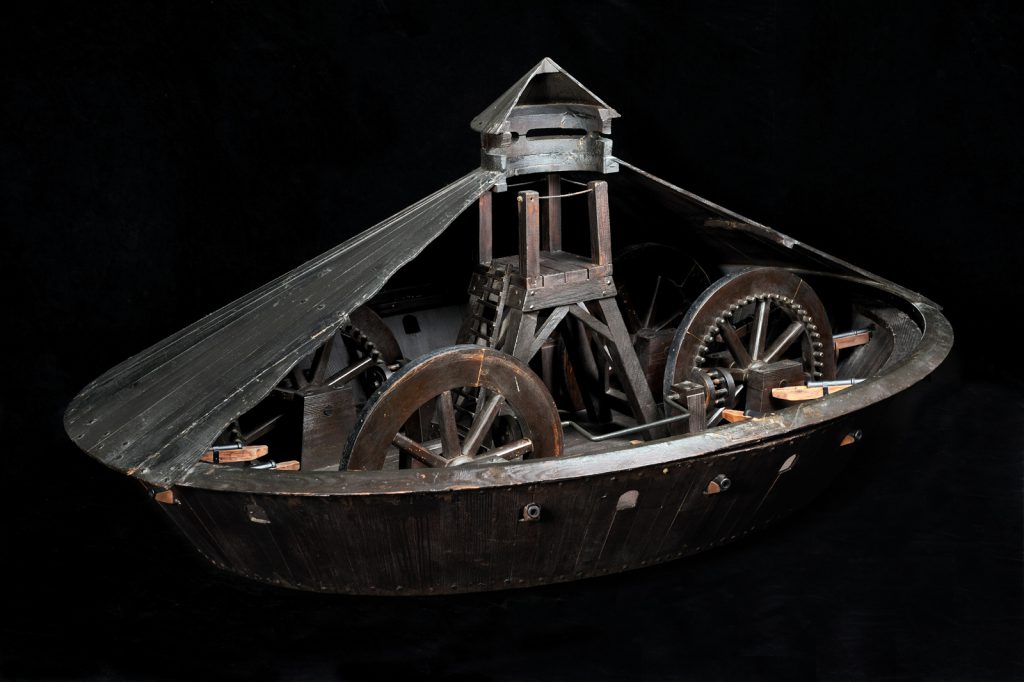
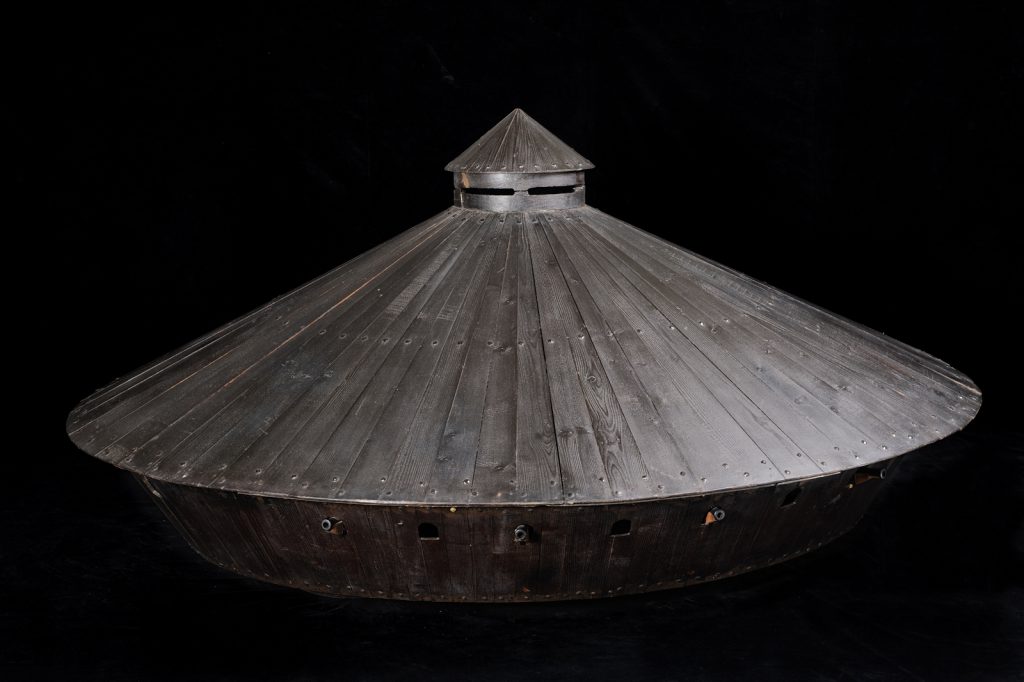
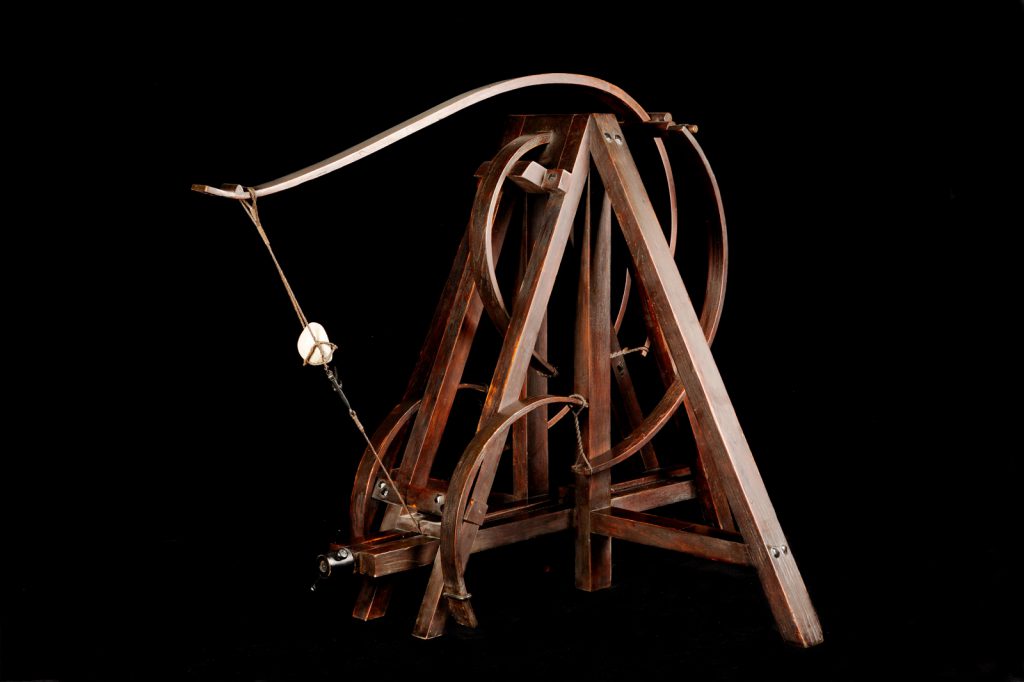
In the case of the model for the flying machine with the crossbow engine, Soldatini and Somenzi made use of two different studies from the Codex Atlanticus, so completing the form of the wings with the bearing structure. Paolo Galluzzi at a later point recognised in the crossbow engine a mechanism for a timepiece that had nothing to do with the flying machine, confirming the doubts on interpretation that Somenzi had already expressed in 1955 (Galluzzi, 1996, p 218).
Other difficulties involved the scale and materials with which to realise the models. Different routes were undertaken from time to time, resorting to reduced scales for many machines or to considerable dimensions for others, with attention placed on fortifying the bearing structures. Many of the drawings, furthermore, present incoherencies between the apparent scales indicated by Leonardo (in placing the machine into relation with the dimensions of a man) and the measures designated in the notes, which often refer to much larger orders of magnitude. In the drawing of the parachute, the dimensions for the man are proportionally larger with respect to the base of seven metres indicated by Leonardo in his notes, and above all, more reasonable. On the other hand, in the drawing of the beating wing, by way of reference to the man manoeuvring it, this would appear to be three or four metres long. But in his notes Leonardo indicates a length of twelve metres. One of the criteria followed in the selection of models to construct, in accord with the project designers’ intentions, was to concentrate on the studies that were most original to Leonardo. In this respect, though, erroneous evaluations were made, because many of the models constructed were based on drawings depicting machines that already existed during Leonardo’s epoch. Examples of such can be seen in the column-raising machine, which was also drawn by Francesco di Giorgio Martini, a traditional Tuscan machine, or in the hydraulic saw, which was widely diffuse and probably introduced at the beginning of the fifteenth century.
Plausibility, aesthetic quality, and harmony of proportions were always held in consideration, and because of this, these models still remain a precious testimony in the history of the interpretation and divulgation of Leonardo’s thought, as well as objects having their own importance in terms of the scientific, engineering and artisanal accuracy with which they were executed.

Further reading
Calvi, G, 1982, I Manoscritti di Leonardo da Vinci dal punto di vista cronologico, storico e biografico (Edizione del testo del 1925 riveduta e integrata a cura di A. Marinoni), Busto Arsizio
Calvi, I, 1953, L’Ingegneria militare di Leonardo, Milano
Crippa, F, Sutera, S, 2005, Leonardo e il mondo tessile. Il primo telaio meccanico, Milano
Galluzzi, P, 1991, Prima di Leonardo: Cultura delle macchine a Siena nel Rinascimento, Milano
Gille, B, 1972, Leonardo e gli ingegneri del Rinascimento, Milano
Gioppo, L, Redemagni, P, 2000, Il Codice Atlantico di Leonardo da Vinci nell, Edizione Hoepli 1894 –1904 curata dall’Accademia dei Lincei, Garbagnate Milanese
Il Codice Atlantico di Leonardo da Vinci pubblicato dalla Regia Accademia dei Lincei, a cura di G. Piumati, Milano, 1894–1904
Kemp, M, 1982, Leonardo da Vinci. Le mirabili operazioni della natura e dell’uomo, Milano
Kemp, M, 2006, Leonardo da Vinci. Experience, Experiment and Design, London
Le fantastiche macchine di Leonardo da Vinci. Come costruirle, come farle funzionare, Milano 1998
Leonardo. Saggi e ricerche. A cura del Comitato Nazionale per le onoranze a Leonardo da Vinci nel V centenario della sua nascita, Roma 1952
Marani, P C, Piazza, G M, 2006, Il Codice di Leonardo da Vinci nel Castello Sforzesco, Milano
Mostra di Leonardo da Vinci. Catalogo, Milano, 1939
Mostra di Leonardo da Vinci. Guida ufficiale. Milano, Palazzo dell’Arte, maggio-ottobre XVII, Milano, 1939
Nanni, R, Torrini, M, 2013, Leonardo 1952 e la cultura dell’Europa nel Dopoguerra, Firenze
Sangiorgi, C, 2004, La mostra di Leonardo del 1939, Brevi note critiche sulla mostra e sul ruolo svolto da Giuseppe Pagano
Sutera, S, 2001, Leonardo. Le fantastiche macchine di Leonardo da Vinci al Museo Nazionale della Scienza e della Tecnologia di Milano. Disegni e modelli, Milano
Sutera, S (a cura di), 2005, Uomini e geni del tessuto industriale italiano. Dal telaio di Leonardo al made in Italy. Atti del Convegno, Milano
Tursini, L, 1953, Le armi di Leonardo da Vinci, Milano
Tags
Footnotes
Back to text
Back to text
Back to text
Back to text
Back to text
Back to text
Back to text
Back to text
Back to text
Back to text
Back to text
Back to text
Back to text
Back to text


